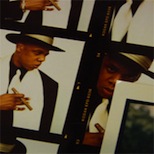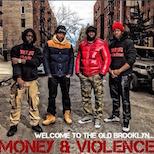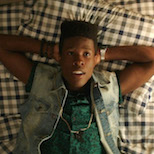Dust Tracks On a Road
12.21.2011
LEISURE

Sharifa Rhodes-Pitts‘ Harlem Is Nowhere: A Journey to the Mecca of Black America is gorgeously written. The gifted Harvard graduate’s debut is the first offering in a trilogy meant to imagine and explore Black Utopia through three landscapes: Harlem, Haiti and the Black Belt South. The Texas native began in Harlem armed with the requisite research–she’d read and absorbed her Renaissance authors, studied Van Der Zee‘s elegant snap shots of Black life on upper Manhattan’s wide boulevards–but she was also prepared to let her research recede, to allow the place and the people and her own experience and interaction with them and the space unfold. Rhodes-Pitts is obsessively observant and the scribbled notes she’d puzzle together when it was time to sit and write pin down the otherwise vaporous moments that make a day, a place, a life and a living. She’s part diarist, part anthropologist. Her Zora Neale Hurston-sized love for “the people” is natural and nuanced, but where Zora may have been weaving tall tales over a makeshift bar in a cramped uptown kitchen, Rhodes-Pitts finds herself cross-legged in a tenant-organized anti-gentrification meeting, copiously taking notes on how to push back against zoning. Here, we talk about her amazing debut, her next two books, land shark realtors, earthquakes and floods.
Life + Times: I believe I’ve read you talking about your mother’s book collection, and in particular, her Black women’s fiction from the early ’70s through the early ’90s. Do you remember spending time with any particular author or piece of work more than the others?
Sharifa Rhodes-Pitts: My mom is a visual artist and an avid reader, she came of age during that moment when Black women were really claiming the artistic stage in America. So her shelves were full of those books; I took them for granted. The summer I was 18, I had a job to save for college and during my lunch hours I disappeared with three books taken from my mother’s collection: Alice Walker‘s In Search of Our Mothers’ Gardens, June Jordan‘s Civil Wars and Lorraine Hansberry‘s To Be Young, Gifted, and Black. They fortified and grounded me as I was about to leave home to attend college in New England. Creatively, the mix of history, personal experience, and politics in those books inspired me and solidified my interest in essays as a form. Later, I abandoned those beginnings–I read widely, across gender, race, nationality, and genre. The writers I found on my mother’s shelves were a foundation and then I had to broaden my tribe. In that camp, some crucial writers are: W.G. Sebald, Virginia Woolf, and Elizabeth Hardwick. But lately I’ve had a desire to go back to some of the Black women’s literature I began with… I have a lot of reading and re-reading to do.
L+T: New York is a walking city and some of your book is about being in the streets on foot and overhearing conversations. In a city as noisy as New York, what about a conversation makes you tune in, to listen? Do you have a favorite pair of listening shoes?
SRP: Hmmm. So much of that is about kismet, you know? Being on a certain corner at a certain moment when some improbable tale flies out of someone’s mouth. Or stopping to talk to someone when I could have kept walking. I had a meditation teacher talk once about every human encounter having the potential for resonance. When I first arrived in Harlem, I walked really slow and made eye contact with everyone and was so obviously not a New Yorker, and this provoked all kinds of experiences. I would usually follow those moments where they led, so there’s some kind of faith in that. No favorite listening shoes, but I spend summers in Dr. Scholl’s; in other seasons I do a lot of time in clogs. I’m happiest of all in the country feeling invincible in sturdy boots.
L+T: It appears you spent time while researching this book studying maps. Part of what you discover and argue is Harlem is constantly shifting, both in the imagination and then again in reality, with certain physical and/or corporate encroachments, as with, say Columbia University. Harlem is of course named for Amsterdam’s Haarlem, and even though it was once Dutch farmland, do you think that efforts to protect it as a literal Black space are important?
SRP: Yeah, the question of whether the physical space is worth protecting is really crucial. Once I was visiting the studio of my friend, visual artist Leslie Hewitt. It’s near the old Renaissance Ballroom on Adam Clayton Powell Jr. Boulevard. The Renaissance was built by Garveyites who put their money together to start an establishment where Blacks could be entertained, since the most famous nightclubs, like the Cotton Club, were segregated. We provided the entertainment and labor but couldn’t go there. So the Renaissance is this incredibly symbolic space, where self-determination in Harlem was expressed physically, through this enterprise. But in the early 1980s, it closed and fell into ruin and was neglected for decades by its subsequent owner, the Abyssinian Development Corporation. A few years ago, they argued against having this historic building named a city landmark because they wanted to build a high-rise condo there. And they won that battle. Sitting with Leslie, just a few steps away from this half-demolished building, I started ranting about how it was a perfect example of the need to preserve the physical traces of our history. But she had a whole different take on it, challenging me to consider how as a people, our relationship to space has always been fugitive, always threatened. And that we’ve always had to claim space in other creative ways. But I still have an attachment to land. When I moved to NYC, I actually could not comprehend that someone would buy a piece of real estate, an apartment, that was nothing but a floating piece of sky without land attached to it. That’s a Texas perspective. I’m obsessed with that Malcolm X quote: “Revolution is based on land. Land is the basis of all independence. Land is the basis of freedom, justice and equality.”
L+T: As a woman raised in the South, are boundaries important to you? Does it affect your interviewing style? Are you careful not to pry? Or do you ask difficult questions straight out?
SRP: In certain ways, I have no boundaries. I’m constantly talking to strangers. But I’m fairly passive about it. I didn’t do interviews for the book. Any conversation that is mentioned happened in the course of my life. It was my life. It wasn’t research. I’ll have to approach that differently for other books, perhaps. I think I’m actually bad at interviews, but I’m told I’m good at listening. I listen a lot more than I ask questions. I observe and stare a lot, too. Whether or not it comes from being Southern, I do have a sense of propriety and privacy that means I don’t push or pry in the way a journalist would. I’m more interested in the person than in “getting the story.” So things unfold. Or they don’t. Maybe that’s a limitation. But it seems to me people reveal what they want to and need to in their own time. And what people don’t say, their silence, often interests me, too…
L+T: Did you go to Harlem with the intention of writing Harlem is Nowhere? If so, were you surprised at yourself when you ended up in advocacy meetings about fair housing with your neighbors?
SRP: My move to Harlem in 2002 was improvised. I’d graduated from college two years before, saved money to travel (in India and Europe), then went home broke to my mother in Texas. I started working an office job while I figured out how to become a writer. When I couldn’t live at home anymore, I went back to the East Coast. I arrived in Harlem with ideas and notes for a historical novel set in Texas; writing about the neighborhood was not on my agenda. The writing came about because of my experiences: I was always meeting Harlemites who seemed as obsessed with history as me. Based on those early encounters I wrote a long essay. When it was published, it got a strong response and I started thinking about a book. I was absolutely surprised when I joined the organized resistance against gentrification in Harlem. My parents were both activists in the ’70s–that’s how they met–so I grew up around a lot of politics and was prematurely jaded. I never had a romanticized idea about The Revolution; I wasn’t throwing fists up in the air. Though I saw myself as politically committed and informed, I had never joined a movement. In 2007, I began attending community meetings expecting to do my regular thing: listening, observing, taking notes. Then I was asked to stand up and give testimony at hearings about development in Harlem. And then I was asked to lend a hand–I threw myself into it. I stopped writing the book because I was organizing and going to meetings. I didn’t plan to write about those experiences at all. Later, when the campaign was over and I was burnt out and trying to get back to work, I realized I had just lived through something that was part of an ongoing story about land, power and politics in Harlem.
L+T: Can you please explain to me your vision for these three books? As I understand it, this is a trilogy of Black Utopia where you write about three places. Was there any other collection or even single work that inspired you or that you referenced when conceiving yours?
SRP: The trilogy project is about three places: Harlem, Haiti, and the Black Belt of the South (in that order). Once I wrote that long essay on Harlem, the path for the book was pretty much set. My interest in Haiti is long-standing, way before the earthquake–I’ve been researching its history for years. So I had the notion for the Harlem book, and the glimmer of an idea for a Haiti book that would meld history and travel. I was talking to a mentor who said, “It’s three books–what’s the third place?” At some point I realized, “Duh… after going away to other places, I’d eventually need to reckon with home.” All three places hold power in the hearts and minds and souls of Black folk, our political, creative, spiritual aspirations. There’s Harlem: the Black mecca. And Haiti: the first Black republic. I want to trace the relationship between Black Americans and Haiti and the ongoing American interventions in the country. In the South, I’m concerned with the idea of the Black Belt as a separate nation within America. This idea has a long history. I’m also interested in the all-Black towns that cropped up before and after the Civil War. I imagine it as more of a road-trip book, traveling from place to place but also traveling in time. At the end of the road I’ll be in Texas. I don’t know if it was influenced by any writer or work in particular. I just want to follow a set of ideas across space and history, and use my own experience as the frame through which those stories are told.
L+T: Now you’re in New Orleans. I’m assuming some of your research centers around Faubourg Tremé, America’s oldest black neighborhood and the home of the Civil Rights movement. Where it’s possible Harlem may be swallowed by the rest of Manhattan, much of Black New Orleans was literally washed away when the levees failed. What are the challenges of writing about Black New Orleans even as the demography so dramatically shifts? Does any of your work involve interviewing those who fled the flood?
SRP: I live in the Treme. It’s been a powerful place to live. I first lived here briefly in the spring of 2005, just a few months before [Hurricane] Katrina. I went to New Orleans the first time without any knowledge about it at all. I was curious since there’s a Creole element in Houston’s black community…it’s nearby but culturally very far away. So I arrived and found a place to live via Craigslist without even having heard of Treme. I met a man a few days into that first stint who, when he heard I lived in Harlem said “Welcome to Treme, the original Harlem of America.” He said that “Harlem was *left* by Dutch people but Treme was *built* by blacks.” I felt like I’d walked into a vortex. At the time I was working on the book proposal for Harlem but all I could read and think about was the history of New Orleans and that neighborhood and this very palpable sense that things were not worked out here. There was not even the illusion of things being worked out. I had this sense of Reconstruction having ended yesterday. And everything that was swirling around suddenly became international news when the levees failed. I ended up back in New Orleans in 2010 in a roundabout way. I was supposed to start my research in Haiti in January 2010 just around the time of the earthquake. Suddenly I didn’t know how or whether I could proceed. I went to New Orleans for a short artist residency and just stayed. So I didn’t come to New Orleans to write about it, either. Maybe I will eventually, but this short time has been about living and listening and learning. Being a part of the community, to the degree a transient newcomer can. I’ve felt welcomed and nourished here. But it hasn’t been directly about writing, if that makes sense.
L+T: From New Orleans you’ll head to Haiti. Will you live there as you are living in New Orleans? Before going, are you anticipating a connection between New Orleans and Haiti?
SRP: The shape my research and experience in Haiti will take is unknown to me. I have some lines of inquiry I want to follow and certain locations to visit. And I’ve read a lot of history and keep up with current events. But probably the most important preparation will be forgetting everything I think I know. And surrender.
L+T: Are you influenced at all by the work of Maya Deren? Of Zora Neale Hurston?
SRP: Somehow I’ve avoided Deren, though I need to get up on her. Hurston is important to me in a way that’s hard to talk about…I feel similarly about someone like Baldwin. I can’t rhapsodize in very academic ways about their work or how it’s affected me. They are family; I have a reverence and appreciation for them that is similar to how you’d feel about a beloved great-aunt or great-uncle. They gave me a sense of what is possible…
L&T: What are your writing rituals? Your restorative ones?
SRP: I practice ritual procrastination. I usually have to sneak up on myself to get writing done. I write ideas on the backs of discarded envelopes along with scribbled grocery lists and to-do lists. Eventually those shards get pieced together. It starts off very disorganized but I can’t really start writing until I have outlines and notecards. But in the midst of the plan there are lots of surprises. In more tranquil moments I keep a notebook. For restoration: lots of baths; my house in New Orleans has a claw-foot tub which I love. I also have a little garden, and spend time out there to get my head clear. I drink tea all day long. When I’m not traveling I’m a homebody and burrow into my domestic life. By all appearances it’s rather idle and boring but being still and quiet makes room for the ideas to land…
Photo: Laylah Amatullah Barrayn’s current exhibit “Her Word As Witness: Portrait Of Women Writers Of The African Diaspora“





